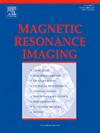The fuzzy MAD stroke conjecture, using Fuzzy C Means to classify multimodal apparent diffusion for ischemic stroke lesion stratification
IF 2.1
4区 医学
Q2 RADIOLOGY, NUCLEAR MEDICINE & MEDICAL IMAGING
引用次数: 0
Abstract
Background
In conjunction with an epidemiologically determined treatment window, current radiological acute ischemic stroke practice discerns two lesion (stage) types: core (dead tissue, identified by diffusion-weighted imaging (DWI)) and penumbra (tissue region receiving just enough blood flow to be potentially salvageable, identified by the perfusion diffusion mismatch). However, advancements in preclinical and clinical studies have indicated that this approach may be too rigid, warranting a more fine-grained patient-tailored approach. This study aimed to demonstrate the ability to noninvasively provide insights into the current in vivo stroke lesion cascade.
Methods
To elucidate a finer-grained depiction of the acute focal ischemic stroke cascade in vivo, we retrospectively applied our multimodal apparent diffusion (MAD) method to multi-b-value DWI, up to a b-value of 10,000 s/mm2 in 34 patients with acute focal ischemic stroke. Fuzzy C Means was used to cluster the MAD parameters.
Results
We discerned 18 clusters consistent with normal appearing tissue (NAT) types and 14 potential ischemic lesion (stage) types, providing insights into the variability and aggressiveness of lesion progression and current anomalous stroke-related imaging features. Of the 529 ischemic stroke lesion instances previously identified by two radiologists, 493 (92 %) were autonomously identified; 460 (87 %) were identified as efficaciously or better than the radiologists.
Conclusions
The data analyzed included a small number of clinical patients without follow-up or contemporaneous histology; therefor, the findings and theorizing should be treated as conjecture. Nevertheless, each identified NAT and lesion type is consistent with the known underpinnings of physiological tissues and pathological ischemic stroke lesion (stage) types. Several findings should be considered in current clinical imaging: WM fluid accumulation, BBB compromise conundrum, b1000 identified core may not be dead tissue, and a practical reason for DWI (pseudo) normalization.
模糊脑卒中猜想,采用模糊C方法对缺血性脑卒中病变分层进行多模态表观弥散分类。
背景:结合流行病学确定的治疗窗口,目前的放射学急性缺血性卒中实践区分了两种病变(阶段)类型:核心(死亡组织,通过扩散加权成像(DWI)识别)和半影(组织区域接受足够的血流,可能是可修复的,通过灌注扩散不匹配识别)。然而,临床前和临床研究的进展表明,这种方法可能过于僵化,需要一种更细致的针对患者的方法。这项研究旨在证明无创的能力,为目前体内脑卒中病变级联提供见解。方法:为了阐明体内急性局灶性脑卒中级联的更细粒度描述,我们回顾性地应用我们的多模态表观弥散(MAD)方法对34例急性局灶性脑卒中患者的多b值DWI进行多b值检测,b值高达10,000 s/mm2。采用模糊C Means对MAD参数进行聚类。结果:我们识别出18个与正常组织(NAT)类型一致的集群和14个潜在的缺血性病变(阶段)类型,为病变进展的变异性和侵袭性以及当前异常卒中相关影像学特征提供了见解。在先前由两名放射科医生发现的529例缺血性卒中病变病例中,493例(92 %)是自主发现的;460人(87 %)被确定为有效或优于放射科医生。结论:分析的数据包括少数没有随访或同期组织学的临床患者;因此,研究结果和理论化应被视为猜想。然而,每一个确定的NAT和病变类型与已知的生理组织基础和病理性缺血性脑卒中病变(阶段)类型是一致的。在当前的临床成像中,应考虑以下几个发现:WM积液,血脑屏障受损难题,b1000识别的核心可能不是死组织,以及DWI(伪)正常化的实际原因。
本文章由计算机程序翻译,如有差异,请以英文原文为准。
求助全文
约1分钟内获得全文
求助全文
来源期刊

Magnetic resonance imaging
医学-核医学
CiteScore
4.70
自引率
4.00%
发文量
194
审稿时长
83 days
期刊介绍:
Magnetic Resonance Imaging (MRI) is the first international multidisciplinary journal encompassing physical, life, and clinical science investigations as they relate to the development and use of magnetic resonance imaging. MRI is dedicated to both basic research, technological innovation and applications, providing a single forum for communication among radiologists, physicists, chemists, biochemists, biologists, engineers, internists, pathologists, physiologists, computer scientists, and mathematicians.
 求助内容:
求助内容: 应助结果提醒方式:
应助结果提醒方式:


